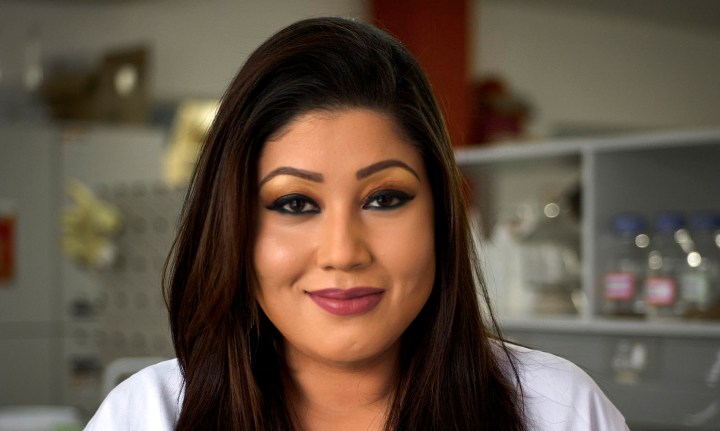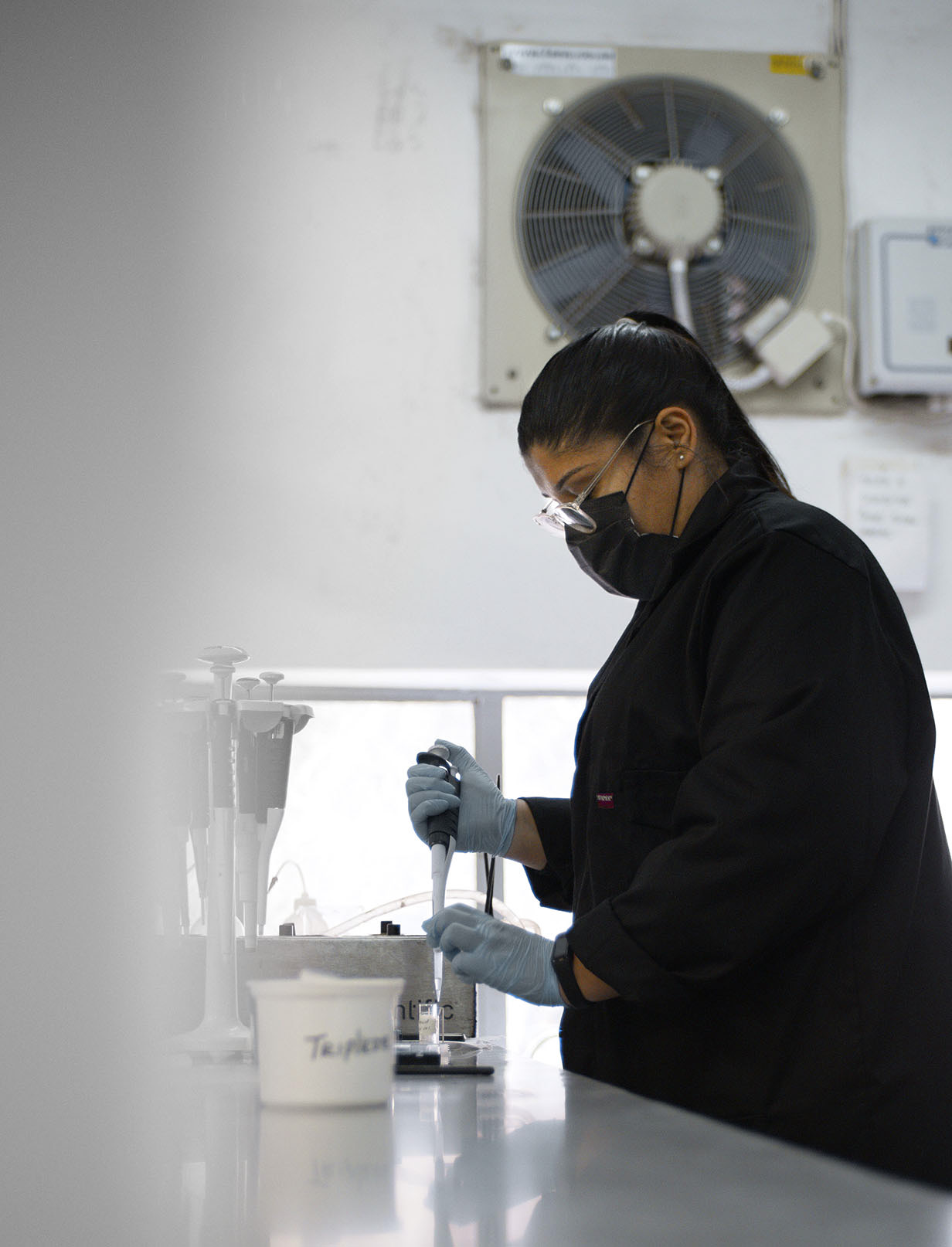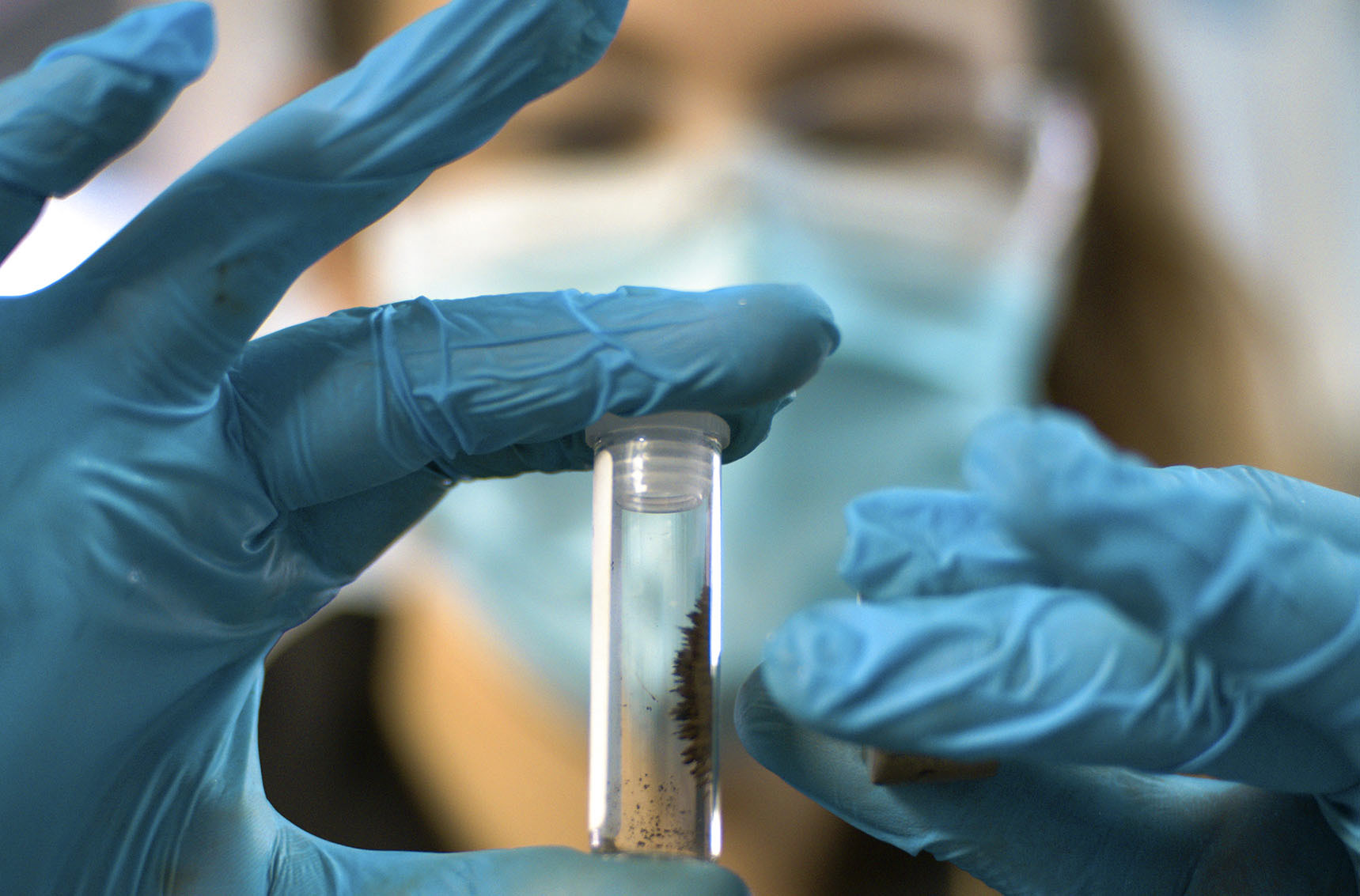SPOTLIGHT
Women in Health: Falling in love with chemistry

The first time Dr Rehana Malgas-Enus stepped into a chemistry lab at university marked the first day of the rest of her life. This love has fuelled many of her career achievements, but now also drives her to share her love of science with learners from disadvantaged communities. Spotlight spoke to Malgas-Enus as part of its Women in Health series.
The first time Dr Rehana Malgas-Enus (38) stepped into a chemistry lab at university, she fell in love.
She says she fell in love with chemistry because she realised the possibilities it presented. In her first year of study, one of the practical exercises they were required to do was to make aspirin in the lab. Malgas-Enus recalls how amazed she was that they could make “actual aspirin”. “Just that act of adding together two completely different reagents or materials and then making something that is so significant to our lives, that is what made me fall in love with chemistry,” she says.
“I realised with this knowledge I will be able to create anything I can put my mind to.”
Malgas-Enus says she’ll always be in love with chemistry and her career because it is always evolving and has equipped her with the knowledge to design molecules with specific properties, functions, and purposes.
She is an inorganic chemist, researcher and senior lecturer at Stellenbosch University. She also runs the RME-Nano Research Group in the university’s Department of Chemistry and Polymer Science. Her unit focuses on the design and synthesis of metal nanoparticles. This work has practical application in treating exaggerated blood clotting and anti-cancer treatment.
A mother’s pride
Beaming with excitement, she tells Spotlight since she was introduced to chemistry during her first year studying for a BSc at the University of the Western Cape, her career path has been clearly mapped out.

Dr Rehana Malgas-Enus dreamt of becoming a medical doctor, partly because her aunt had died of cancer and she wanted to help develop cures for such diseases. Now she is doing cutting-edge research that may contribute to the development of new cancer treatments. (Photo: Jano Voigt / Spotlight)
“In my first year, I decided not only am I going to do chemistry, but I’m going to get a PhD in chemistry. I had my goal, and I was not stopping until I got it,” she says.
Her journey to running the RME-Nano Research Group in Stellenbosch where she is surrounded by posters and journal covers of her research and those of some of her students, started in Beacon Valley in Mitchell’s Plain. One of two daughters, she was driven from an early age. Part of this drive came from her mother, who was widowed at the age of 31 and worked in a steel factory to support herself and her daughters.
“I was very focused because my mom worked so hard and she had dreams for me,” she says.
Her dream in high school was to be a medical doctor, partly because her aunt had died of cancer and she wanted to help develop cures for such diseases.
Two decades later, she is doing cutting-edge research that may, among others, contribute to the development of new cancer treatments.
Malgas-Enus recalls the day she received her PhD. It was like her mother, who was her biggest cheerleader and inspiration, had received a PhD too.
“My mom is my hero. In my eyes, there is no one better than her. She was all for woman empowerment and a feminist,” she says.
Laughing, she recalls how her mom would tell strangers about her daughter who had a PhD in chemistry. She says during their shopping trips her mother would pretend to be tired and would take a seat on a bench just so that she could strike up a conversation with a stranger and tell them about her daughter. She would even present evidence in the form of the mini photo proof from her graduation that she always kept in her wallet.
“By the time I get to her on the bench, she’d say ‘ah here she is now’ and she would be so proud and beaming. I loved making my mom proud and I will continue to do so.”
Her mother died five years ago.
Making a difference with nanotechnology
In her well-organised lab in the Polymer Science Building, surrounded by scientific equipment and cylinders full of colourful substances, Malgas-Enus conducts research that she hopes will have a real impact on the lives of people. “I want to make a contribution to science, to life, to the quality of life,” she says.
She explains that nanotechnology is the study of nanomaterials or nanoparticles, which are very small particles that are 1×10-9 m in diameter. The small size results in the nanoparticles having different properties than that of the bulk material it is derived from.
“For instance, [take] your ring — gold is inert, it’s solid, it doesn’t react with anything. But if we make gold nanoparticles, oh my goodness, it can do so many things.” Her face lights up as she explains. “It’s such a good catalyst. It’s amazing. Just breaking it down to that nanoscale gives it different properties.”
Continuing with gold as an example, Malgas-Enus says that the process of making gold nanoparticles is easy — they simply reduce it to a small size. However, stabilising it and controlling its size is what becomes difficult.
When gold is reduced in the first step of the process, it agglomerates and grows if left unstabilised. So, it needs to be stabilised, usually with something called a ligand, she explains.
“If you put a ligand on like this, it’s called a mono-layered protective cluster (MPC) and this is usually how people make nanoparticles.”
But with MPCs, you are restricted to a certain size dictated by the type of ligand that is used, making it difficult to compare nanoparticles in terms of size.
“It’s a bit of a chemistry lesson. I’m sorry,” she says, before continuing.
To combat this limitation, she says she realised she could use a method learnt during her post-graduate studies — using something called a dendrimer to stabilise the nanoparticles. After some trial and error, she found a method that worked, and now her solution to many problems in her own research and that of her students is to use a dendrimer as a template.
During her master’s, Malgas Enus was introduced to the dendrimers, in this case, metallodendrimers, which are dendrimers that incorporate metals or metal complexes. This was then used, she explains, in catalysis to convert something useless into something more useful.
Biomedical applications and real-world solutions

Dr Rehana Malgas-Enus and her team conduct research that she hopes will have an impact on the lives of people. (Photo: Jano Voigt / Spotlight)
During her postdoc, she was involved with anti-cancer research, which exposed her to various biomedical applications.
Since then, Malgas-Enus and her post-graduate students have used nanotechnology in research projects that have real-world applications including extracting precious metals from acid-mine wastewater, removing dyes from textile wastewater, as catalysts for olefin transformations, and various biomedical uses. Malgas-Enus explains that olefin transformations mean you are taking something that you cannot use, often a by-product of the petroleum industry, and turning it into something useful. For example, converting a by-product called pentene into diesel or petrol or converting pentene into a polymer.
For biomedical uses, she works with the Department of Physiology and the Faculty of Health Sciences at Stellenbosch University. This research includes anti-cancer research, tuberculosis treatment and the treatment of coagulated blood clots.
“I design the nanomaterials, and they (the students) have to come to my lab and make it because that’s also how they get training. Then they go to their lab at Tygerberg (campus) and test it and their results are so exciting,” she says.
The anti-cancer research Malgas-Enus is doing in collaboration with the Department of Physiology is a great example of two separate fields using their expertise to solve a problem. “They understand the disease and how it reacts in the body and we understand how to synthesise a certain molecule with the desired properties,” she says.
“Our aim is to create a nanomaterial which is selective for tumour cells as opposed to being toxic to both tumour and healthy cells.” This, she says, can be achieved by studying the differences between the tumour and the healthy cells and finding weak spots.
“For instance, the acidic environment which the tumour is in could be a target for our nanodrug,” she explains. “We also work with the Health Sciences Faculty to find solutions towards drug-resistant TB by combining magnetic nanomaterials with new TB drugs and then controlling the material to go to the site of infection,” she says.
Giving back
Amid the posters and journal covers decorating the office — including her research featured on the cover of the international inorganic chemistry journal Polyhedron — there is also an award.
In 2018, Malgas-Enus received the National Research Foundation (NRF) Excellence in Science Engagement Award because of an outreach programme she started in 2013.
“The reason I do outreach is [that if] I’m in a position to help others, why would I not?” she says.
The drive to give back is rooted in the actions of her mother many years ago, she says. Her mother used to make a large 100-litre pot of food for the children from their community every week. “So that’s what she was like and that’s why I think I’m the way that I am,” Malgas-Enus says.
She says researchers can do significant outreach without compromising their research, as she herself has demonstrated.
The Stellenbosch University Chemistry Outreach Initiative (Suncoi), started with the idea to give the grade 10, 11, and 12 students from five underprivileged schools in the Western Cape access to the lab facilities at the university to fulfil the practical assessments necessary for physical science.
Later, Malgas-Enus compiled a Caps-compliant training manual as a guide on how to conduct experiments. She tells Spotlight that this spilled into annual teachers’ workshops and the development of cost-effective kits that contain all the ingredients for the different experiments the teachers need to conduct. She adds that the kits and workshops now also include primary school teachers and their students, as well as a YouTube channel called LabM8.
The outreach work dovetails with her conviction that science needs more diversity. “The more diverse the people are working on a problem, the better your chances are of solving the problem,” she says.
Working on a universal problem, she says, requires collaboration between people from different areas of expertise, genders, backgrounds and ages. “Each one of us will look at the problem from a different perspective and this is how we will be able to come up with better, more feasible solutions to global concerns.” DM/MC
This article is part of Spotlight’s Women in Health series featuring the remarkable contributions of South African women to medicine and science.
This article was produced by Spotlight – health journalism in the public interest.





















 Become an Insider
Become an Insider
Comments - Please login in order to comment.